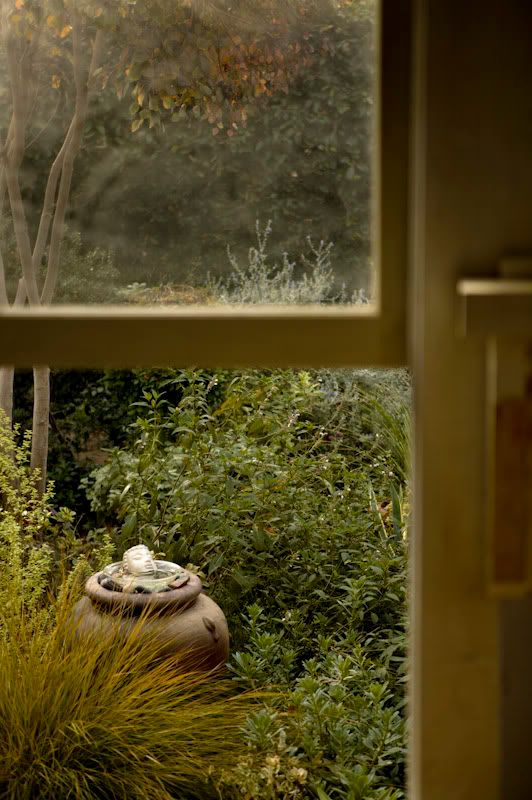Zone 10, 32 degrees latitude, to be exact. Have been reading this fall many blogs of brave gardeners in cold climes putting a cheerful face on the impending winter, asserting that gardens and gardeners need a rest anyway. This may or may not be true, but such narratives consistently sustain us through adversity, and I’m all for that. But summer is when our landscape rests, and fall when it springs back to life.
What does a Southern Calif obsessive gardener do in what passes for our winter? (Besides start a blog in the 21st century.) Start seeds (lots of verbascum this year), take cuttings, move plants, shuffle pots. Same stuff as cold-climate gardeners (except no greenhouse required.) Gawk at the amazing, slanting, autumnal light. Fool around with the deciduous-versus-evergreen ratio and how much bare ground will be tolerable for three months. Going the evergreen/Italian route sacrifices available room for the ephemerals, of course, so the ratio fluctuates year to year. Lately, allowing space for ephemeral spring bloomers is winning out. Excitement vs. evergreen stasis. Each fall one negotiates whether to go the hardy annual route or just tough it out sans “color.” I usually choose the latter but made up one pot of maroon linaria, Euphorbia ‘Breathless Blush,’ and prairie dropseed, Sporobolus heterolepis. What else? Oh, and wait for rain. On our knees.
Rumor is six days of rain are imminent. The garden goes off life support at last. Clouds willing, the watering cans will collect webs until April. I’m gradually adjusting my horticultural ambitions to follow the growth/rain cycles here, with emphasis on rain-driven spring displays which begin as early as Feb, then tapering off expectations for summer’s annual drought. Maybe some agastache and grasses and call it done. With possibly some tropicals thrown into the mix for late fall as long as water rationing allows. More on that later.
And I have no idea why this obsession found me, which is sort of the impetus for the blog. In all honesty, I’m not very good at practical gardening either, which in no way diminishes the pleasure gained. I’m reasonably sure that any framework that allows one to consider issues of proportion and balance, whether in gardens or any other area, is worth pursuing.
More on Los Angeles, Zone 10: Rainfall averages approximately 15 inches. In a banner year. A subtle, dry landscape, easily sculpted by man and thus easily distorted, occasionally into the grotesque. Most of my life, I’ve always wanted to live elsewhere; now I never want to leave. Yet I just read that more people are now leaving Calif for Texas and Oklahoma as arrived from those states during the Dust Bowl. Migrations ever in flux.
From Marin Independent Journal on July 15, 2000, by Diane Lynch
“Q: Why is most of California’s climate referred to as Mediterranean? Isn’t that stretching it a bit far?
A: There are five regions in the world that have so-called Mediterranean climates. They are characterized by their locations 30 to 40 degrees from the equator on the western sides of continents and by the dry summers and wet, mild winters they typically have. Interestingly, the western edges of the continents have cold offshore currents and a complex phenomenon called upwelling, which makes these ocean areas very rich and varied in life forms and also moderates the summer temperatures in coastal areas. The reason we have rain in the winter months and not in the summer months is due to the fact that we are between two major climate zones: the northwest zone brings rain to the Seattle area most of the year but affects us mostly in the winter months, and the southern California zone, which is dry and calm and dominates our summer weather. Other areas of the world that have similar climates are the southwestern tip of Africa, portions of western Australia, the central coast of Chile, as well as the Mediterranean Basin, which has the world’s largest area with this climate. The amounts of rainfall and length of dry spells vary considerably within each of these regions. Summer drought is the defining factor but it can range from 11-12 months down to 1-2 months.”
Thank you, Diane Lynch.
(photo by MB Maher)

